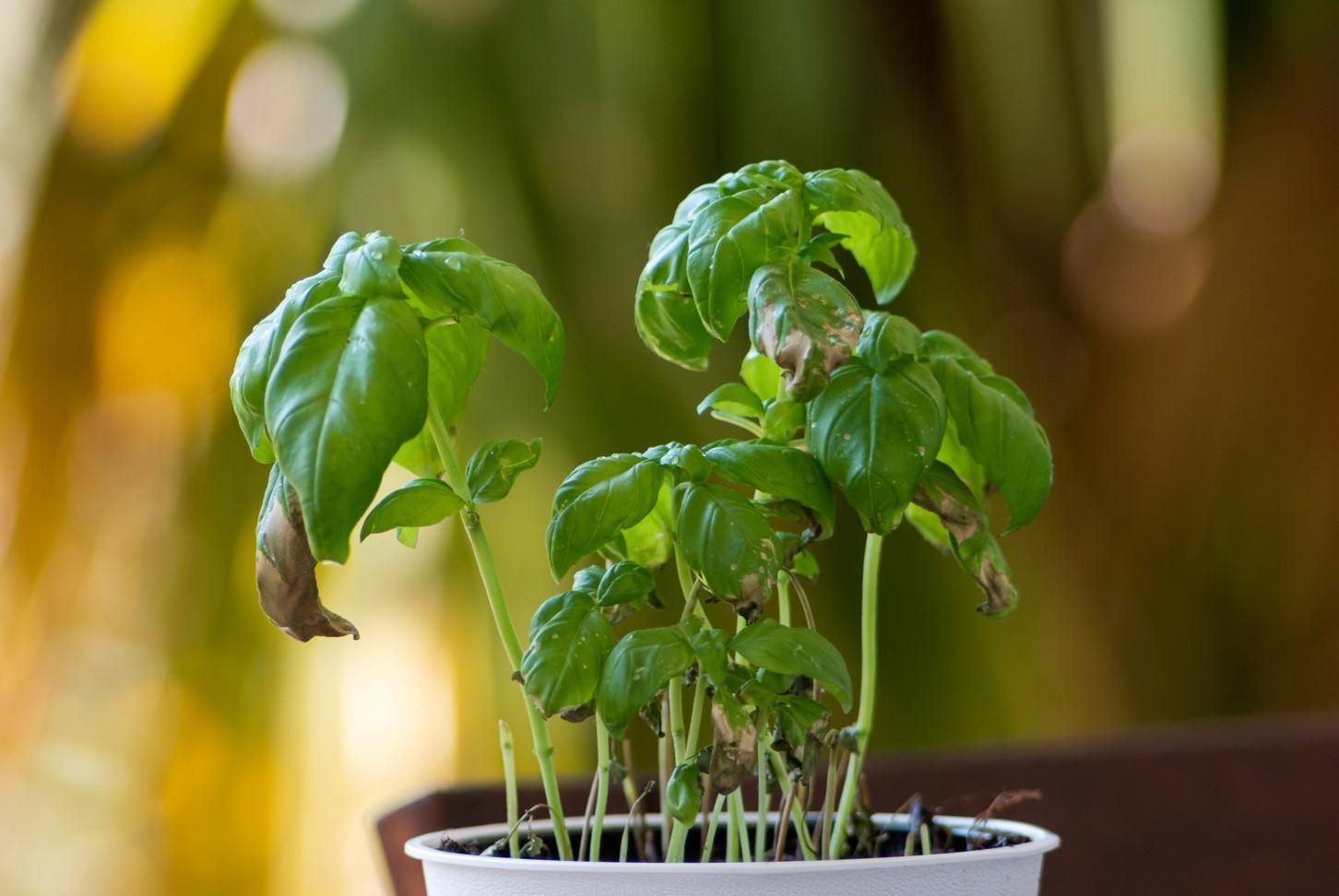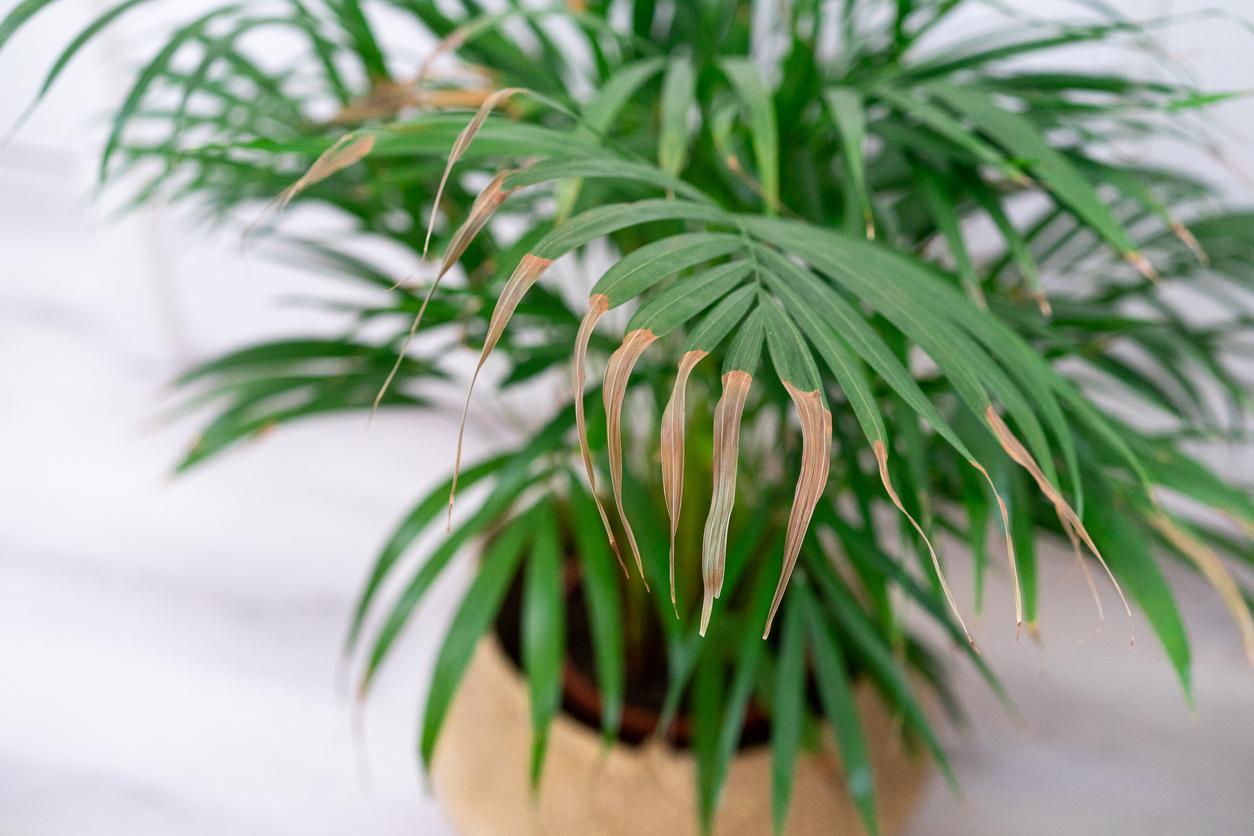The Tips of Plant Leaves Are Turning Brown and Dry


Often if we have a problem with our plants, we first notice it in the tips of their leaves. If they have started to turn dry and become brown in color, it is a problem which needs to be resolved. If it is not, it may result in the death of the plant. You may think you may not need to worry if only the tips are dry, but it can be the first symptom of a much more serious problem which can accelerate quickly. When the leaves turn brown and dry, they will become brittle and break off. It is a phenomenon which can affect both indoor and outdoor plants.
If you notice the tips of plants leaves are turning brown and dry when caring for them, you will need to know why and what to do about it. oneHOWTO provides the possible reasons for dry brown leaves and the possible solutions to each problem.
Improper watering
Browning at the tips of plant leaves is often caused by poor irrigation. Just as we humans need water to survive, our plants will become thirsty when they are not given sufficient hydration. The water doesn't only hydrate the plant, but it helps the plant absorb nutrients from the soil, sun and even the air. Do not pour too much too soon as it can overpower the plant. They may need a few days to reach optimum hydration.
If you notice the tips of your plant leaves are turning brown, check the substrate to see if it is dry. If the soil sticks to your finger or a toothpick when inserted, it means it is hydrated and there is another reason the leaves are turning brown.
Remember that too much water is also a problem. Many plants will become waterlogged if over-hydrated. If you check the substrate and water is pooling, it could be due to too much water.
Excessive drainage
Although excessive watering can damage plants, we need to know why the plant's leaves are turning dry. What may be happening is too much drainage. Especially if the plant requires loose soil or the roots are very large, the water may not be remaining in the substrate. For this reason, we need to ensure we have the right drainage at the base of the pot.
To help the substrate hold on to moisture better, you may want to add absorbent elements. Peat and earthworm castings may be a good option to keep your soil moist. On the contrary, do not add materials which are too porous. This latter group may include volcanic stones or coconut fiber.
Learn how to make a homemade fertilizer if you think the plant needs some more nutrients.

Improper sun exposure
A very frequent reason for dry and brown ends on plant leaves is related to sun exposure. It is common for the leaves to dry out when they are exposed to too much sunlight. Some plants required shaded or semi*shaded areas to thrive.
Another problem may be due to there being too much intensification of sunlight. If we keep a plant beside a thick glass window, the UV rays can magnify and dry out the leaves more quickly. Similarly, if we spray the leaves with water when they are in direct sunlight, this will also have a magnifying action.
Each individual plant has their own light requirements. We shouldn't only think brown and dry leaves are caused by too much sunlight. If the plant does not receive enough sunlight, this can also lead to the leaves being damaged.
Poor humidity
Another possible cause is related to the atmosphere of the room. Many plants require very humid environments to survive. This is the case with many plants of tropical origins which will not thrive in arid environments. Cala lilies, ferns and other tropical plants fall into this category.
Part of the issue is due to the air conditioning we use inside the home. Many of us have health problems or other issues which mean we can't have too much humidity in the home. This can change depending on the season. For example, if we have the heating on a lot it can dry out a room, even in winter. This can cause the plant to have dry brown tips, no matter how much water you give it.
The solution may be to play the plant somewhere with better humidity, such as near a window. You can use a humidifier if this is an option or you may need to spray the air around the plant regularly.
Root damage
Sometimes the reason a plant has dry leaf tips is quite hidden. This is the case when the roots are not adequately fulfilling their function of absorbing water and nutrients. If your plant has grown noticeably and you haven't transplanted it into a larger container, the roots may have become compacted or compressed to such an extent they function improperly.
Try to change the plant to a larger pot. While doing so, try to aerate the root ball by separating the roots a little. You will need to do this very carefully as you can damage them while doing so. With some air, more space, a renewed substrate and moderate watering, dry ends can be stopped.
Root clusters are also a reason why an indoor plant stops growing.
High level of sodium in the substrate
Especially in gardens of coastal areas, some plants can be affected by the high degree of salinity that concentrates in the soil. The presence of sodium chloride (salt) can contribute to dehydrating the plant as a whole, starting with the tips of its leaves. The same can happen if you have recently used some type of chemical fertilizer with a high level of sodium. Counteracting the effects of salt on plants is simple with specific products that you can find in a garden store or by providing a new substrate, some organic matter and proper irrigation.
Air currents and temperature changes
Sudden changes in temperature can also cause the deterioration of the plant's leaves, especially at their tips. Similarly, a draft of dry air could also wreak havoc. You can help protect outdoor plants during frost and low night temperatures with an awning or plastic greenhouse. Also avoid areas where currents or drafts are frequent. These will help the plant to stay healthy and hopefully reverse the damage.

Diseases and pests
Fungi, bacteria, insects or parasites can also cause a plant's leaves to dry and turn brown. Whiteflies, aphids, mealybugs and other pests often feed on the sap of the plant. In doing so, they cause the plant to dry out, starting with the tips of the leaves.
Fumigation, a specific phytosanitary treatment or biological control with their natural predators will solve the problem. If addressed in time, the plants will recover their health. We recommend you take a look at our articles on some of the most common pests that can affect plants:
If you want to read similar articles to The Tips of Plant Leaves Are Turning Brown and Dry, we recommend you visit our Gardening & plants category.






